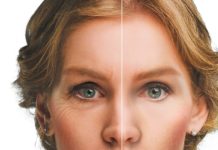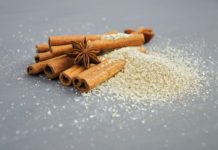Tired of mold invading your personal space? Learn effective tips and tricks to eliminate mold from your home. Traditional methods of removing mold can be expensive and harmful, but our carefully chosen strategies prioritize both your well-being and budget. Explore our expert tips to remove mold from your home and create a cleaner, healthier living environment. By using the options below, you can find effective ways to get rid of mold and protect your home.
Recognizing Mold in Your Home
Spotting the Difference Between Mold and Mildew
Mold and mildew might look similar, but they have distinct differences. While both are types of fungi, mold has a fuzzy or slimy texture and comes in various colors. On the other hand, mildew appears powdery and is usually white or gray. Knowing these differences is important for effective treatment and prevention.
Common Places Where Mold Grows
Mold thrives in damp, humid areas. Bathrooms, with their moisture from showers, are common places for mold to grow. Basements, especially those with poor ventilation or water damage, are also susceptible.
Window sills gather condensation, providing the moisture mold needs. Kitchens, laundry rooms, and attics can also be affected.
Early Signs of Mold Growth
Detecting early signs of mold growth helps prevent further damage and potential health issues. Look for musty smells, peeling paint or wallpaper, discolored walls or ceilings, and water stains. If you see any signs of mold, investigate promptly to address the problem before it spreads.
Essential Supplies for Removing Mold
Safety Gear
Safety is crucial when dealing with mold. Wear protective gear like masks, gloves, and eye protection to avoid inhaling mold spores or coming into contact with them. This gear helps reduce the risk of respiratory problems and skin irritation during the removal process.
Cleaning Products
Effective cleaning products are essential for tackling mold. Commercial mold removers designed for mold removal are available. You can also use household items like bleach, which kills mold on hard surfaces, or vinegar, known for its natural antifungal properties.
The choice of cleaning product depends on the severity of the mold and the surface you’re treating.
Tools
The right tools make mold removal easier. Stiff-bristle scrubbing brushes are ideal for removing mold from surfaces. Buckets are necessary for mixing cleaning solutions and collecting debris.
Spray bottles allow you to apply cleaning products precisely. These tools help remove mold effectively and restore cleanliness to affected areas.
Tips and Tricks for Mold Removal at Home
Prioritize Safety
Before removing mold, focus on safety. Always wear protective clothing, including gloves, goggles, and a mask or respirator, to avoid inhaling harmful spores. Ensure good ventilation in the area. If mold growth is extensive, it’s best to consult professionals.
Seal Off Affected Areas
To prevent mold spores from spreading, isolate the affected areas. Use plastic sheets and tape to cover doors, windows, and vents. This containment strategy reduces the risk of mold spreading during the removal process.
Dry the Area
Mold thrives in damp environments. Use fans and dehumidifiers to thoroughly dry the affected area. This stops existing mold growth and prevents new spores from forming. Monitor humidity levels to keep them low.
Clean and Scrub Affected Surfaces
Use a detergent solution or specialized mold cleaner to scrub mold off hard surfaces. Non-porous materials like metal, glass, and plastics are usually salvageable. However, porous materials like carpets or drywall might need to be replaced if heavily contaminated.
Rinse and Dry Again
After cleaning, rinse off any remaining cleaning solution with clean water. It’s crucial to dry the area completely again, as any lingering moisture can lead to new mold growth. Fans and dehumidifiers help speed up the drying process.
Dispose of Cleaning Materials Properly
Cleaning materials like rags, scrubbing brushes, and protective clothing may be contaminated with mold spores. Seal them in plastic bags before disposing of them. Always follow local regulations for proper disposal methods to ensure environmental safety.
Natural Mold Removal Methods and How They Work
Vinegar
Vinegar, especially white vinegar, is a natural and effective mold remover. It can kill around 82% of mold species. Simply spray undiluted vinegar on the moldy area, let it sit for an hour, and then wipe it clean. Its acidic nature breaks down mold while deodorizing the area.
Baking Soda
Baking soda is a mild white mineral powder that works well for mold removal. Mix it with water to create a paste and use it to scrub away mold. Since it’s gentle, it’s safe for most surfaces, neutralizes odors, and prevents mold from coming back.
Tea Tree Oil
Tea tree oil is a potent natural antifungal. Mix 1 teaspoon of tea tree oil with 1 cup of water, spray it on moldy areas, and let it dry. This strong formula not only removes mold but also helps prevent its return, though it has a distinct scent.
Grapefruit Seed Extract
Grapefruit seed extract is a powerful antifungal and antimicrobial agent that’s effective against mold. Mix 10 drops of the extract with 1 cup of water, spray it on mold, and leave it without rinsing. It has no smell, making it a good choice for those sensitive to strong odors.
Hydrogen Peroxide
A 3% hydrogen peroxide solution is effective against mold. Spray it on mold, let it sit for 10 minutes, then scrub it off. While it kills mold and whitens surfaces, be cautious as it can bleach certain materials. It’s best stored in a dark container.
Preventing Future Mold Growth
Regularly Check High-Risk Areas
Areas prone to moisture, like basements, bathrooms, and under-sink cabinets, need regular inspection. By monitoring these areas, you can catch early signs of mold growth and prevent larger infestations. Regular checks also allow for quick action if moisture or mold issues arise.
Maintain Good Ventilation
Stale air encourages mold growth. Ensure that rooms, especially bathrooms and kitchens, are well-ventilated. Use exhaust fans, open windows, and promote proper air circulation to reduce mold’s ability to thrive by keeping spaces dry and fresh.
Fix Leaks Promptly
Leaks from pipes, roofs, or appliances can introduce moisture into your home. Fixing leaks right away minimizes water damage and reduces the chance of mold taking hold. Quickly addressing leaks can save time and resources in the long run.
Control Humidity Levels
Mold loves humidity. Investing in dehumidifiers, especially in damp areas like basements, can be essential. Aim to keep indoor humidity levels between 30-50%. Hygrometers can help monitor and adjust the indoor environment, preventing excessive moisture.
Choose Mold-Resistant Products
When renovating or building, opt for mold-resistant products. This includes mold-resistant paints, drywall, and building materials. These products act as barriers, making it tough for mold to grow. They provide long-term protection and peace of mind.
Frequently Asked Questions (FAQs)
How soon can mold grow after water damage?
Mold can start growing within 24 to 48 hours after water damage, under the right conditions. It thrives in damp, warm settings with organic matter. Quickly addressing water damage prevents mold growth and further complications.
Is all mold harmful?
No, not all mold is harmful. While many molds produce allergens, irritants, and potentially toxic substances, only specific species are considered pathogenic or toxic to humans. However, even exposure to non-toxic molds can cause allergic reactions or respiratory problems in sensitive individuals.
How is black mold different from other molds?
Black mold, specifically Stachybotrys chartarum, is a mold species often associated with health concerns due to mycotoxin production. However, not all dark-colored molds are Stachybotrys. Other molds can be black without being toxic. It’s important to note that mold color isn’t a reliable indicator of potential health risks. Professional testing is needed for accurate identification.
When to Seek Professional Help
Mold contamination varies from small patches to extensive infestations. While minor issues can be handled on your own, assess the situation carefully. If mold spreads beyond a small area or is inside walls, seek professional assistance to ensure complete removal and prevent recurrence.
Mold affects not only air quality but also weakens materials like wood and drywall. Prolonged exposure to moisture causes hidden structural damage. Professionals can identify threats and provide necessary repairs, ensuring structural integrity and preventing costly damages.
Exposure to mold spores can worsen allergies and pose risks to those with compromised immune systems. Symptoms like respiratory problems, skin irritation, and eye discomfort are common. In such cases, DIY methods may not suffice, and professional mold removal is crucial to protect health.






















